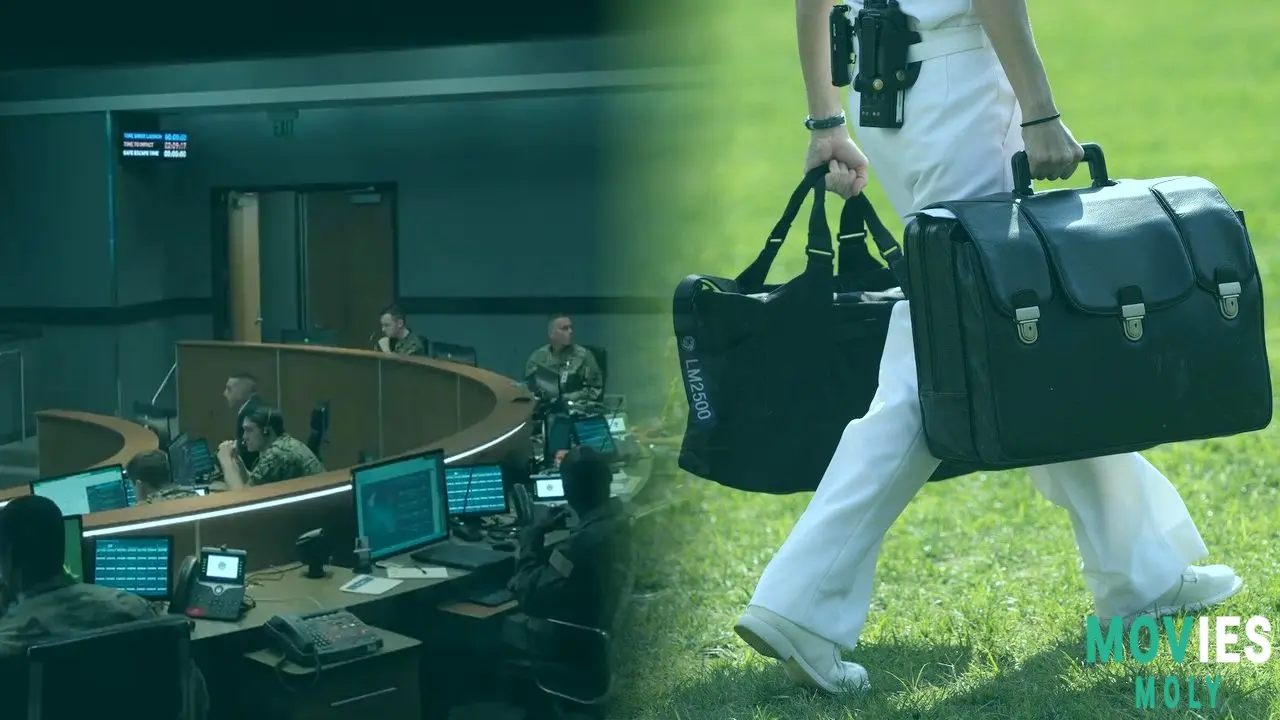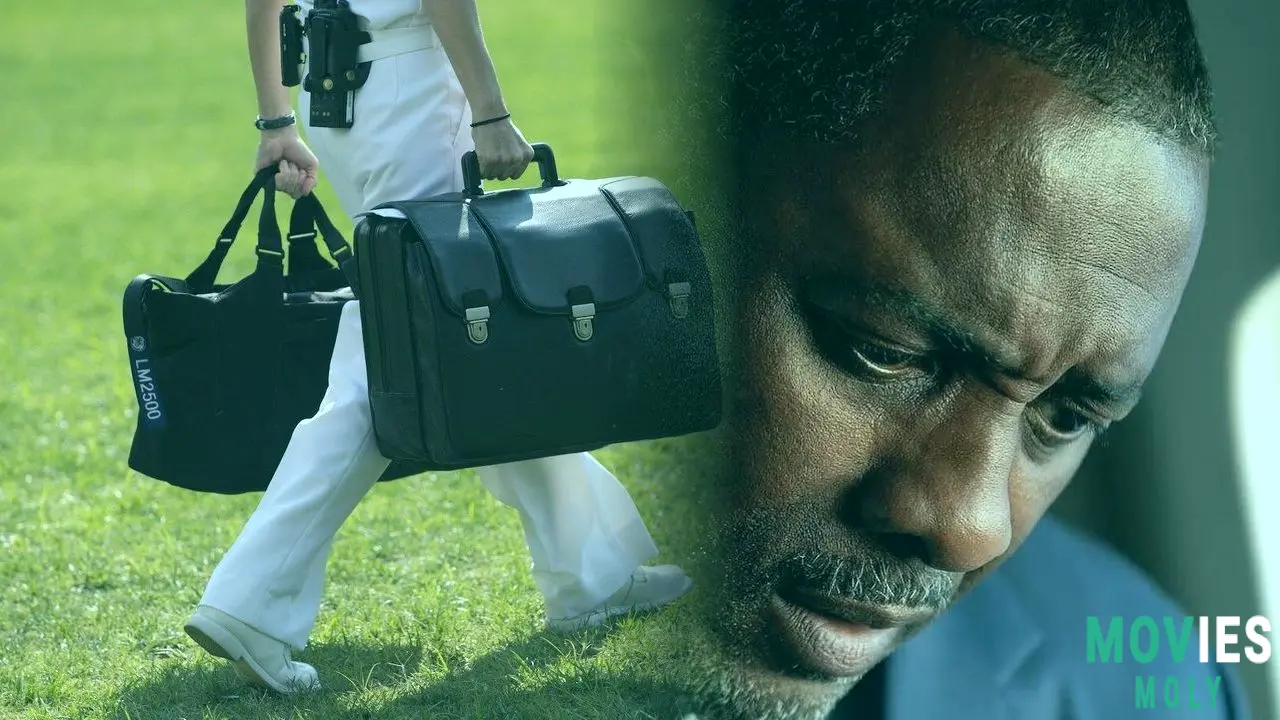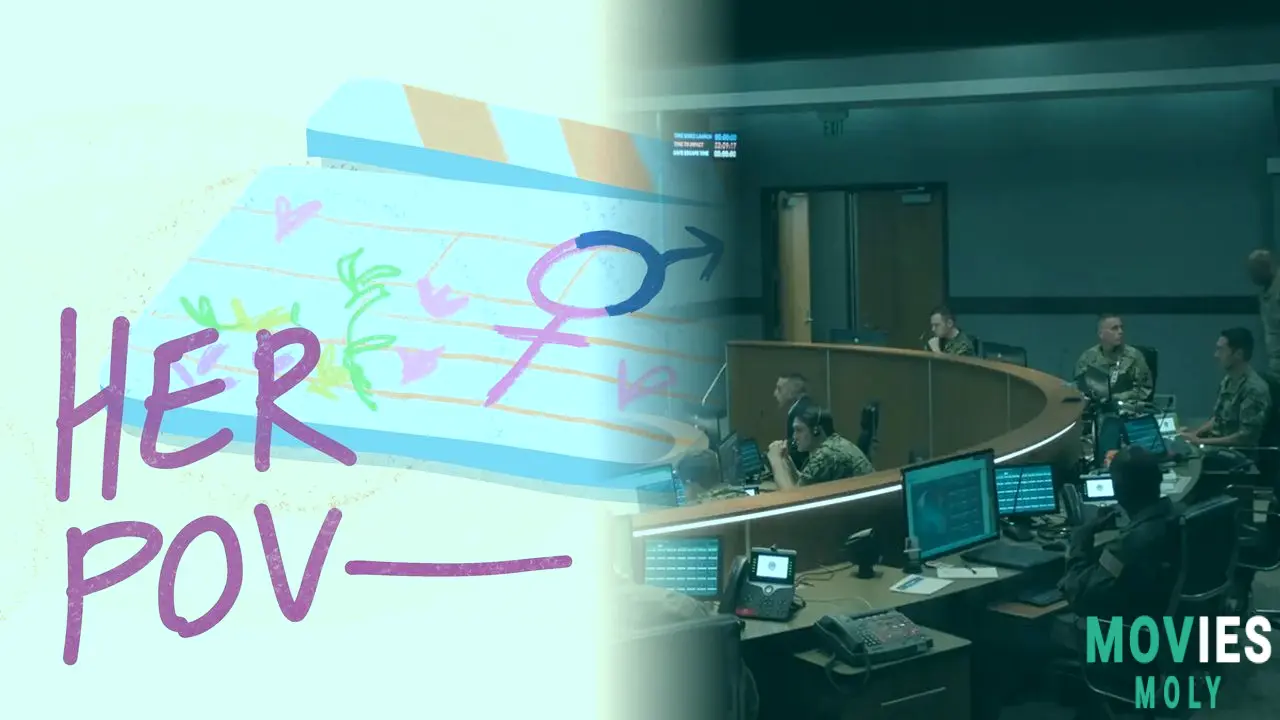Kathryn Bigelow's thrilling new film is making waves, not just for its gripping plot, but for exposing a chilling reality: U.S. presidents might be woefully unprepared for the ultimate nuclear decision.
TL;DR: The Core Takeaways from "A House of Dynamite" and Beyond
- Kathryn Bigelow's "A House of Dynamite," starring Idris Elba, depicts a U.S. president facing a nuclear attack with alarmingly little preparation, a scenario experts say is disturbingly close to reality.
- Current U.S. presidents typically receive only one brief nuclear protocol orientation, often described as a "remote control" lesson, with no mandatory practice for actual crisis decision-making.
- While "sole authority" aims for rapid retaliation, it places immense, potentially judgment-impairing stress on a single individual, highlighting the urgent need for regular, realistic nuclear crisis exercises.
Imagine this: a cold, gray March morning in New York City, 2008. A group of officials gathered in a Midtown conference room, watching a digital simulation of a nuclear bomb detonating over their city. The blast erased block after block, the skyline vanished in an instant. This wasn't some abstract exercise; it was a terrifyingly realistic model, designed to show officials what survival would hinge on: swift, coordinated action in the first hour to save hundreds of thousands of lives. That stark demonstration, and similar ones across other major U.S. cities, aimed to shake leaders into preparedness. The problem? Seventeen years later, the required planning, training, and community exercises simply aren't happening. Source: [Deseret News, "Opinion: Eighteen minutes to impact – Salt Lake City's unthinkable moment," November 13, 2025].
This unsettling real-world context makes Kathryn Bigelow's new political thriller, "A House Of Dynamite," hit especially hard. The film, which debuted on Netflix on October 24, 2025, and quickly topped the charts, paints a harrowing picture: a single intercontinental missile, origin unknown, races toward the United States. President Idris Elba’s character faces the impossible choice – retaliate against perceived rivals or risk Chicago's obliteration. His lament, "They only had one briefing when I was sworn in. One," isn't just a dramatic line; it echoes a profound concern about how prepared our actual commanders-in-chief are for humanity's most fateful decision.
The President's Nuclear Playbook: A Single, Sobering Briefing

In "A House of Dynamite," the president is handed a color-coded, laminated binder of nuclear strike options, pulled from a military aide's black satchel. This detail, alongside the impossibly short response time and the president's evident unpreparedness, might seem like classic Hollywood sensationalism. Yet, experts argue it's frighteningly accurate. Real-world presidents probably are unprepared for the immense burden of their sole authority to order a nuclear strike, especially in a "launch under attack" scenario, where quick action is needed to prevent the U.S.'s ability to retaliate from being impaired. Source: [Foreign Policy, "The U.S. President Should Practice for a Nuclear Crisis," November 13, 2025].
Presidential nuclear briefings are highly classified, but what's known points to a surprisingly minimalist approach. Presidents generally receive just one short briefing, hours before inauguration, focusing mainly on the how—the procedures for ordering a strike. George W. Bush’s former chief of staff reportedly described it as "very rote…kind of like how to use your remote control for the TV." While the experience often leaves presidents sobered (President Lyndon B. Johnson even initially refused the briefing, finding the "nuclear football" stressful), this singular orientation is usually it. Beyond updates on force posture, presidents are never again taken through the actual decision-making process, nor are they required to practice it.
There's one notable exception: Jimmy Carter, who remains the only president to participate in nuclear command and control exercises. Ironically, despite his unique interest, Carter reportedly once lost his "biscuit"—the authentication card for ordering a strike—by sending it to the dry cleaner. This anecdote, while almost comical, underscores how quickly the immense gravity of nuclear responsibility can fade into the background of a president's daily affairs.
The Double-Edged Sword of "Sole Authority" for Nuclear Strikes

The concept of the president's sole authority for nuclear launch emerged from the Cold War, driven by fears of an enemy attack disabling the U.S. government or its command-and-control systems. Concentrating this power in one person was meant to enable rapid retaliation, ensuring rivals would fear swift destruction if they dared to attack. The goal was deterrence: keep them from striking by promising immediate, devastating consequences.
However, this "sole authority" comes with a significant drawback, vividly illustrated by Idris Elba's character in the film. Burdening a single individual with the literal fate of the world risks impairing their judgment precisely when it's needed most. The high-stress, unfamiliar reality of a nuclear crisis is already an immense challenge for decision-making. Presidential unpreparedness only exacerbates this, transforming the situation into a "surprise exam straight out of your nightmares," where intuition or impulse could dangerously override careful thinking. Source: [Foreign Policy, "The U.S. President Should Practice for a Nuclear Crisis," November 13, 2025].
"A HOUSE OF DYNAMITE (Netflix): Terrifying, especially given the unprincipled, waffling nitwit now occupying the White House…or what remains of it."
— Stephen King (@StephenKing), October 24, 2025Debating Solutions: More Voices or Better Preparedness?
Many proposals suggest involving more people in the nuclear decision-making process. For instance, top officials could be required to jointly authorize a strike, or prior congressional approval could impose a democratic check on presidential power. While these ideas aim to mitigate the risks of sole authority, they introduce new trade-offs.
A group decision-making process might simply swap one individual's poor judgment for the "groupthink" of many. Consider the disastrous 2003 U.S. invasion of Iraq, arguably a product of group consensus overriding dissent. Conversely, during the 1962 Cuban Missile Crisis, President John F. Kennedy wisely resisted his advisors' initial overwhelming advice to bomb Cuba. His caution paid off; U.S. policymakers had underestimated Soviet deployment levels, and airstrikes could have easily escalated to nuclear war. These proposals also risk eroding sole authority, slowing down response times, and potentially undermining the U.S.'s deterrence posture if it signals less reliance on rapid action.
The Path Forward: Making the Unthinkable Concrete Through Practice
Given these complexities, a more immediate solution lies in better educating the president on nuclear crises. The goal isn't just to prepare the commander-in-chief for such an event, but to make them more prudent in avoiding one altogether.
One crucial step is to engage presidents in custom nuclear exercises designed to replicate the challenging conditions of crisis decision-making. Decades of research on historical nuclear crises highlight the considerable difficulties: high informational complexity, unpredictability, leader overconfidence, and potential losses of control. To mirror these uncertainties, exercises should throw everything possible at a chief executive, making the abstract specter of nuclear war—and its severe limits of controllability—as concrete as possible in their mind.
Addressing Potential Drawbacks of Extensive Nuclear Drills
Of course, simulations have their limits. A well-practiced executive might become overconfident in a real crisis, substituting unfamiliarity with a false sense of mastery. Exercises can't truly replicate the tremendous stakes of an actual nuclear war; the reality remains abstract. There's also the risk of intelligence leaks, revealing how a president might respond to an attack, allowing adversaries to plan accordingly.
However, the benefits of presidential nuclear exercises likely outweigh these risks. They can foster a crucial change in mindset, encouraging greater attention to the gravity and uncertainty of nuclear war. Supplemented by routine briefings drawing on contemporary research and past crises, such an education could nudge us closer to a world where nuclear war scenarios like "A House of Dynamite" remain safely in the realm of fiction.
Beyond the Oval Office: A Nation's Crisis of Competence
The preparedness gap isn't limited to the White House. The Salt Lake City opinion piece points out that fewer than one-third of major U.S. cities have any kind of plan for a nuclear attack, and another third admit they couldn't respond without federal help. Despite nearly $8 trillion poured into homeland security since 9/11 for command centers, satellites, and hardened networks, we've neglected the "connective tissue" that makes these systems truly functional. Philip Zelikow, in "Lessons from the COVID War," called this a "crisis of competence"—the failure to turn capacity into capability.
For example, imagine a single missile launch from the Sea of Japan, as implied by a recurring graphic in "A House of Dynamite," heading towards Chicago. The movie suggests we might not even know for certain who launched it – a "fing sub captain who woke up, found out his wife left him, and snapped," as one general in the film grimly suggests. This "Pearl Harbor Scenario," where a strategic miscalculation or rogue actor from one of the now nine nuclear-armed countries could trigger an unforeseen response, is a far cry from the clear-cut U.S. vs. Soviet Union paradigm of the Cold War. Our publicly acknowledged strike responses, largely rooted in "mutually assured destruction," may be technologically impressive but strategically outdated for this new landscape. Source: [We Are The Mighty, "A House of Dynamite is technically flawed, but it's worth talking about," November 13, 2025].
The pressure on a president to launch a counter-strike, even when details are murky, is very real. Historical near-misses during the Cold War—five publicly acknowledged times that technical SNAFUs almost caused a nuclear false alarm—demonstrate how a handful of individuals resisted overwhelming pressure. The idea of "nuking Moscow to save face," even if it wasn't Moscow, becomes a chilling possibility when emotions run high and time runs out. The film highlights this, making it clear that a president's decision is not subject to debate or oversight; physically, there's no time for Congress to vote when weapons can cross oceans in 20 minutes.
Your Role in Facing the Unthinkable: Practical TakeawaysKathryn Bigelow's "A House of Dynamite" is more than just a suspenseful film; it's a stark mirror reflecting uncomfortable truths about national and presidential preparedness for a nuclear crisis. It challenges us to move beyond denial and face the unthinkable before it happens. Here’s what we can take away:
- Advocate for Presidential Training: Support initiatives that call for regular, realistic nuclear crisis exercises for the commander-in-chief, beyond a single introductory briefing.
- Demand Local Preparedness: Urge your city and state leaders to develop and practice comprehensive nuclear attack plans, moving beyond the current "crisis of competence."
- Know the Basics: Memorize critical first steps for survival, like "get inside, seal windows, stay put, stay tuned." These simple acts could save lives if sirens ever wail.
- Stay Informed: Understand that the nuclear threat landscape has evolved beyond the Cold War. Nine countries now possess nuclear weapons, introducing new complexities and scenarios.
- Where can I watch "A House of Dynamite"? "A House of Dynamite" was released on Netflix on October 24, 2025, after a limited theatrical run.
- Who stars in "A House of Dynamite"? The film stars Idris Elba as the U.S. President, with Rebecca Ferguson, Moses Ingram, Anthony Ramos, Gabriel Basso, Tracy Letts, Renée Elise Goldsberry, and Greta Lee in supporting roles.
- Is "A House of Dynamite" based on a true story? While "A House of Dynamite" is a fictional political thriller, its depiction of presidential unpreparedness and the mechanics of a nuclear crisis is considered disturbingly realistic by experts. The concept of "sole authority" and the limited training for presidents are based on real-world concerns.
- How long is "A House of Dynamite"? The articles do not specify the runtime of "A House of Dynamite."
- Christopher David LaRoche. "The U.S. President Should Practice for a Nuclear Crisis." Foreign Policy, November 13, 2025.
- Kelly McKinney. "Opinion: Eighteen minutes to impact — Salt Lake City’s unthinkable moment." Deseret News, November 13, 2025.
- Chad Collins. "Breathtaking Thriller Tops the Netflix Charts, and Stephen King Calls it 'Terrifying'." Dread Central, November 13, 2025.
- Blyss Cleveland. "Her POV: Who gets to survive ‘A House Of Dynamite’ in the United States?" The Stanford Daily, November 12, 2025.
- Peace House. "Screening of blockbuster film ‘A House of Dynamite’." Ashland.news, November 2025.
- We Are The Mighty. "A House of Dynamite is technically flawed, but it's worth talking about." We Are The Mighty, undated.






